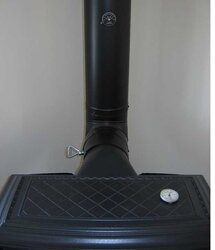Our stove performs really well - perhaps too good.
Draft is perhaps a bit too strong, even with it turned-down
all the way, resulting in short, hot burns. I would like to
lengthen the burns a bit, and perhaps keep some of the heat
around a bit, instead of up the flue.
Is there anyone out there who uses a stovepipe damper to assist
in this?? Good?? Bad?? What did it do for you??
Thanks for your input...
Rob
Draft is perhaps a bit too strong, even with it turned-down
all the way, resulting in short, hot burns. I would like to
lengthen the burns a bit, and perhaps keep some of the heat
around a bit, instead of up the flue.
Is there anyone out there who uses a stovepipe damper to assist
in this?? Good?? Bad?? What did it do for you??
Thanks for your input...
Rob


